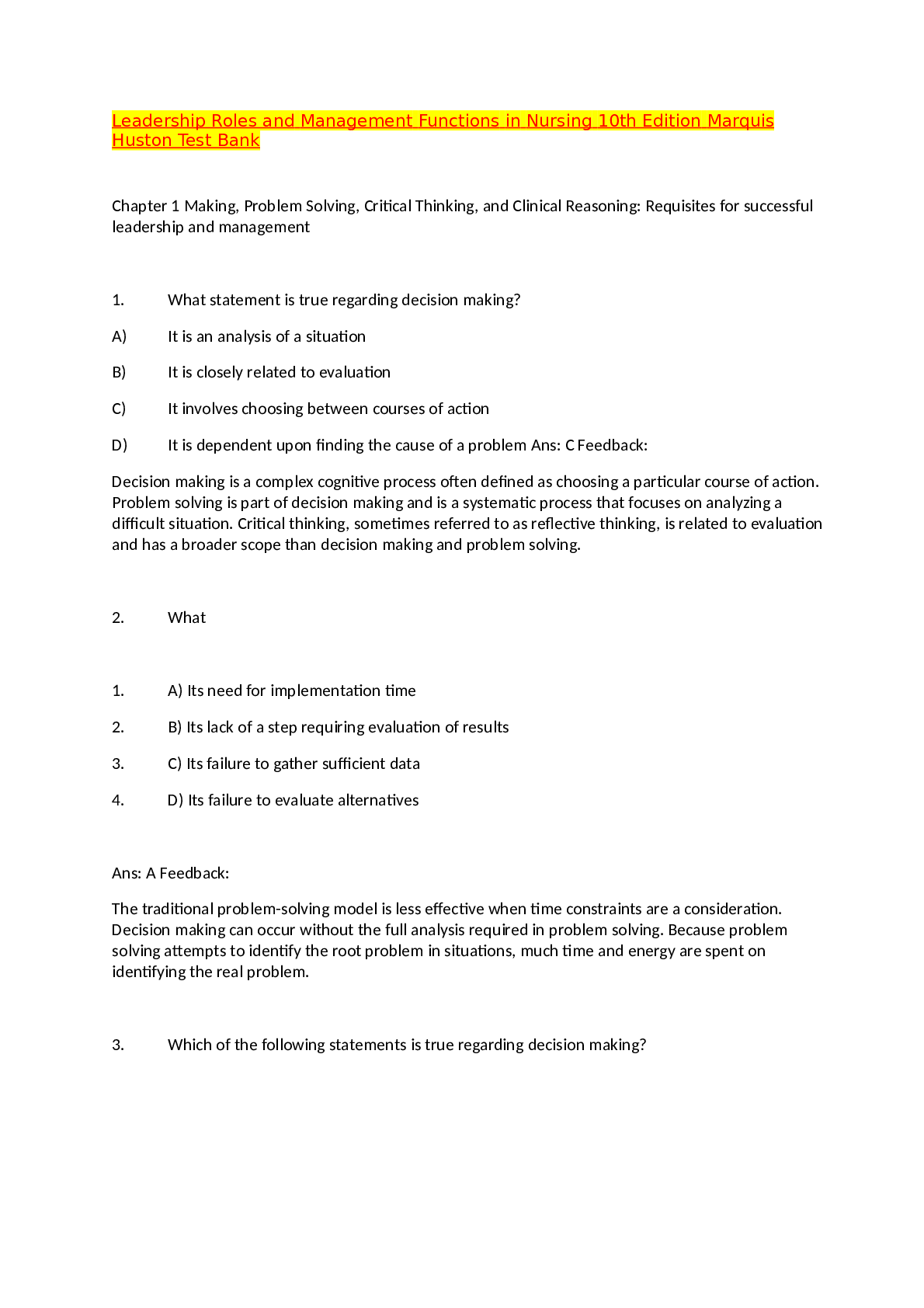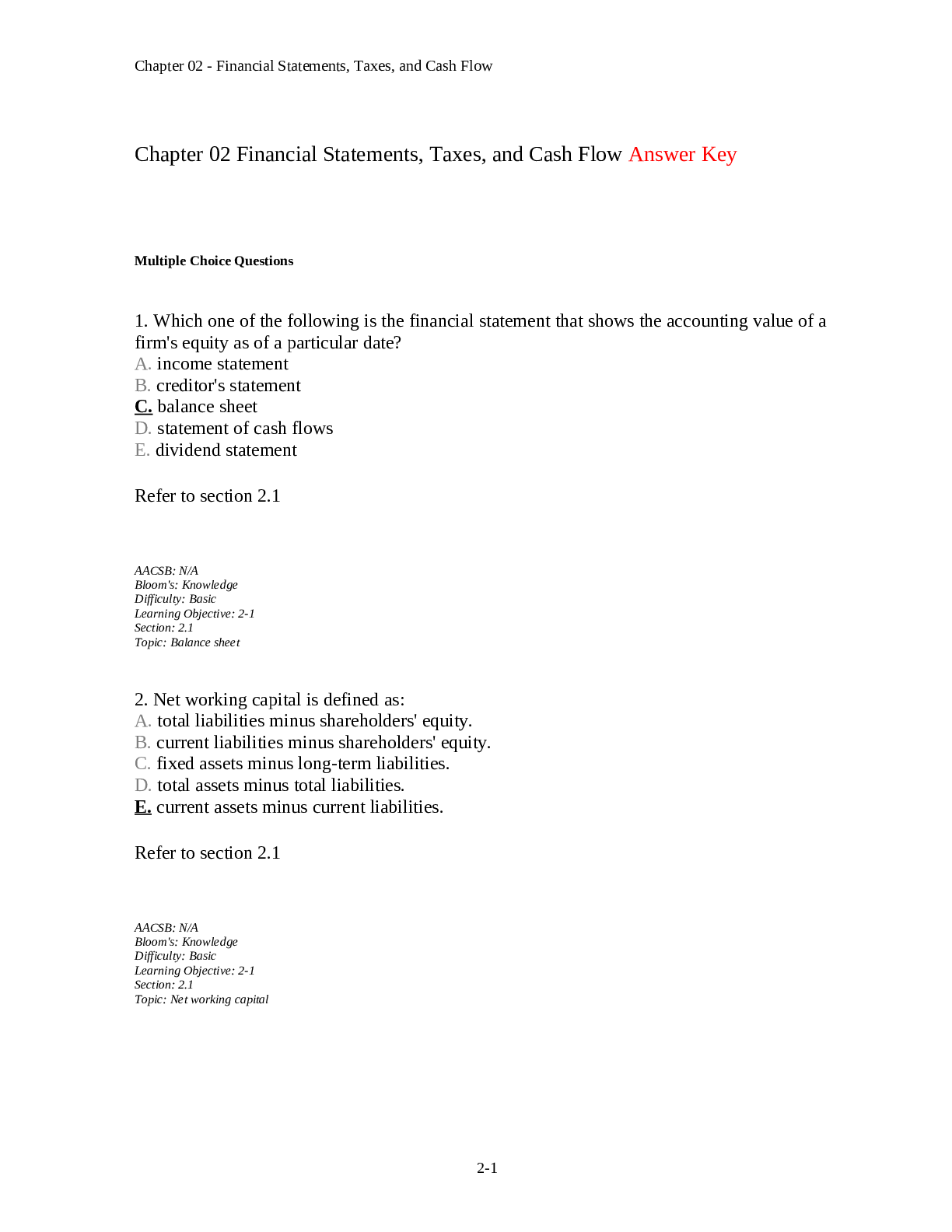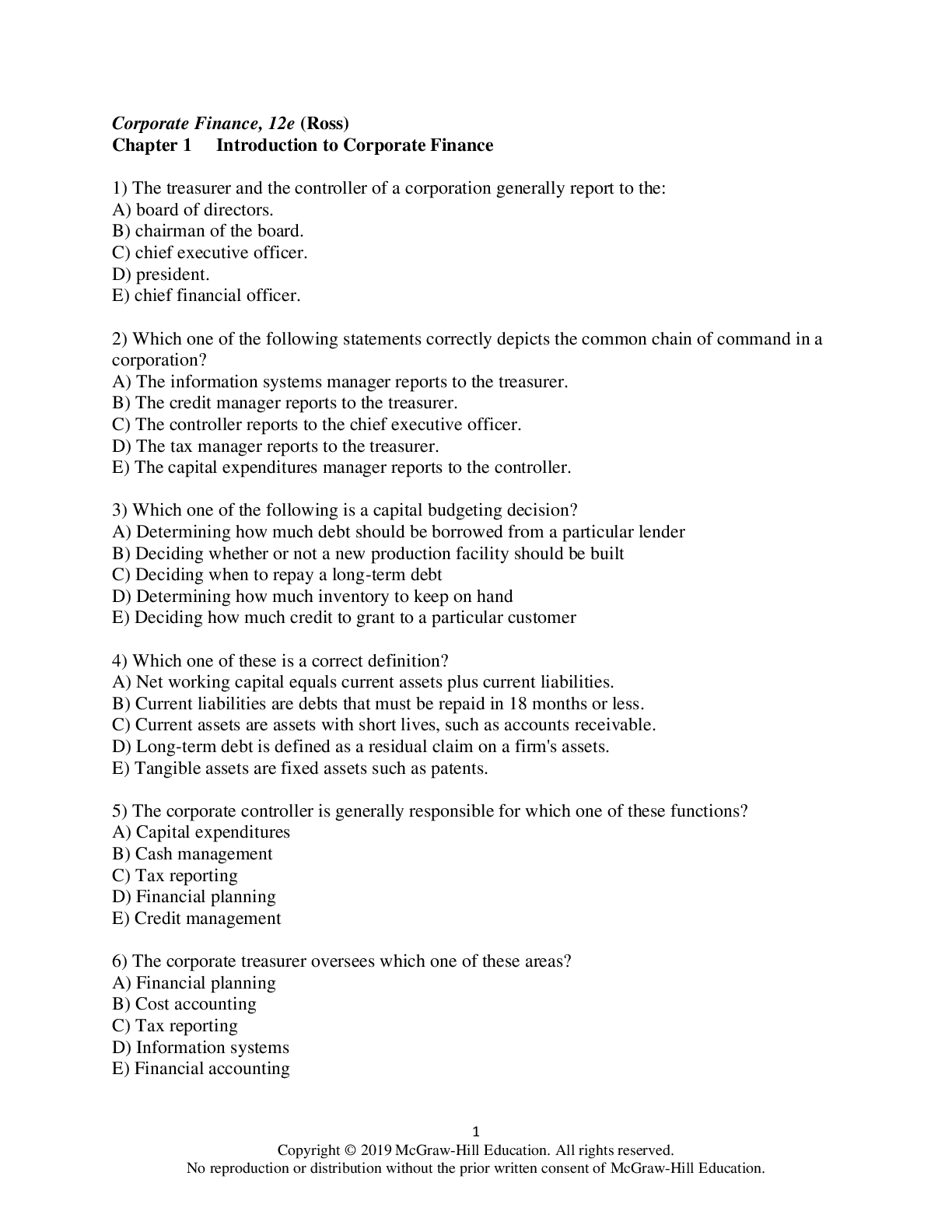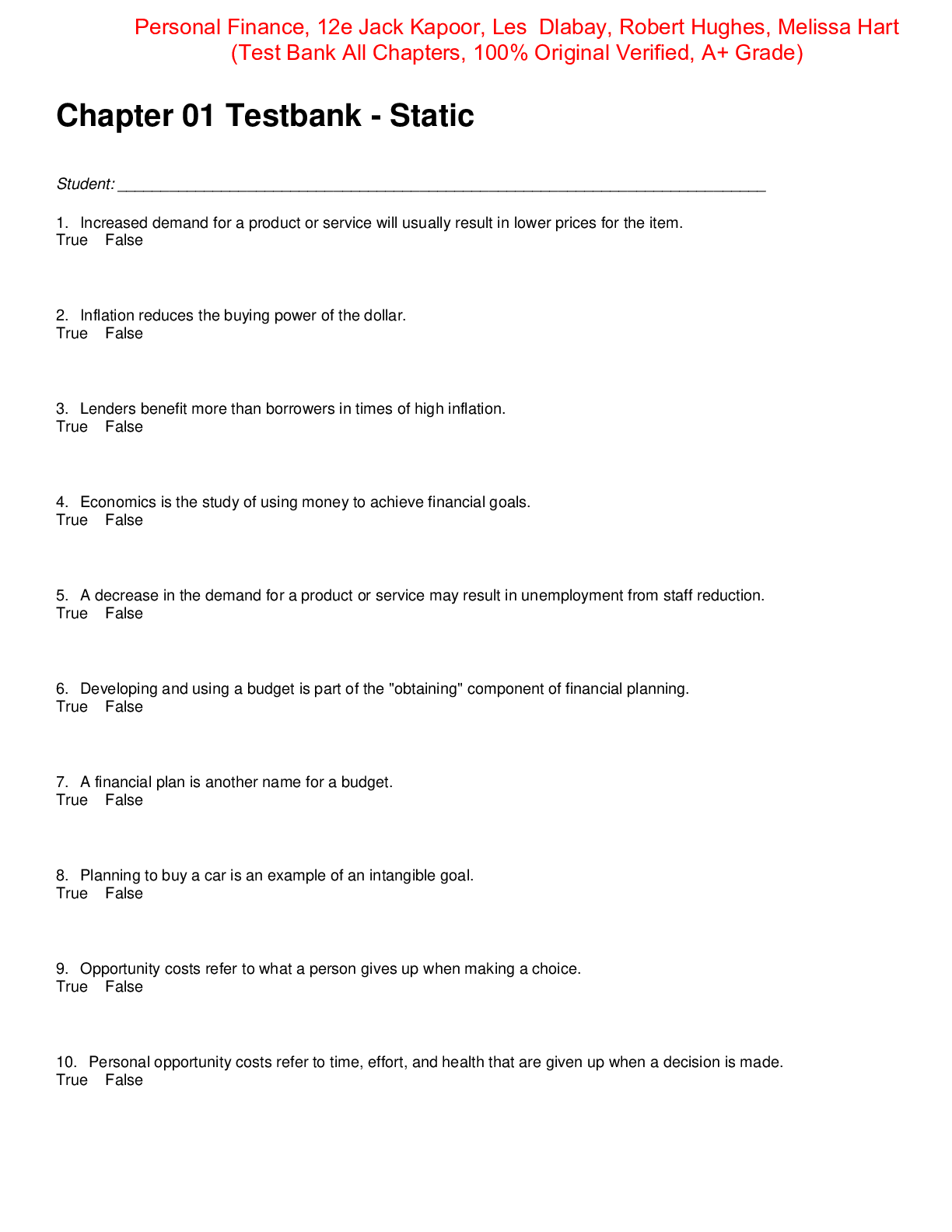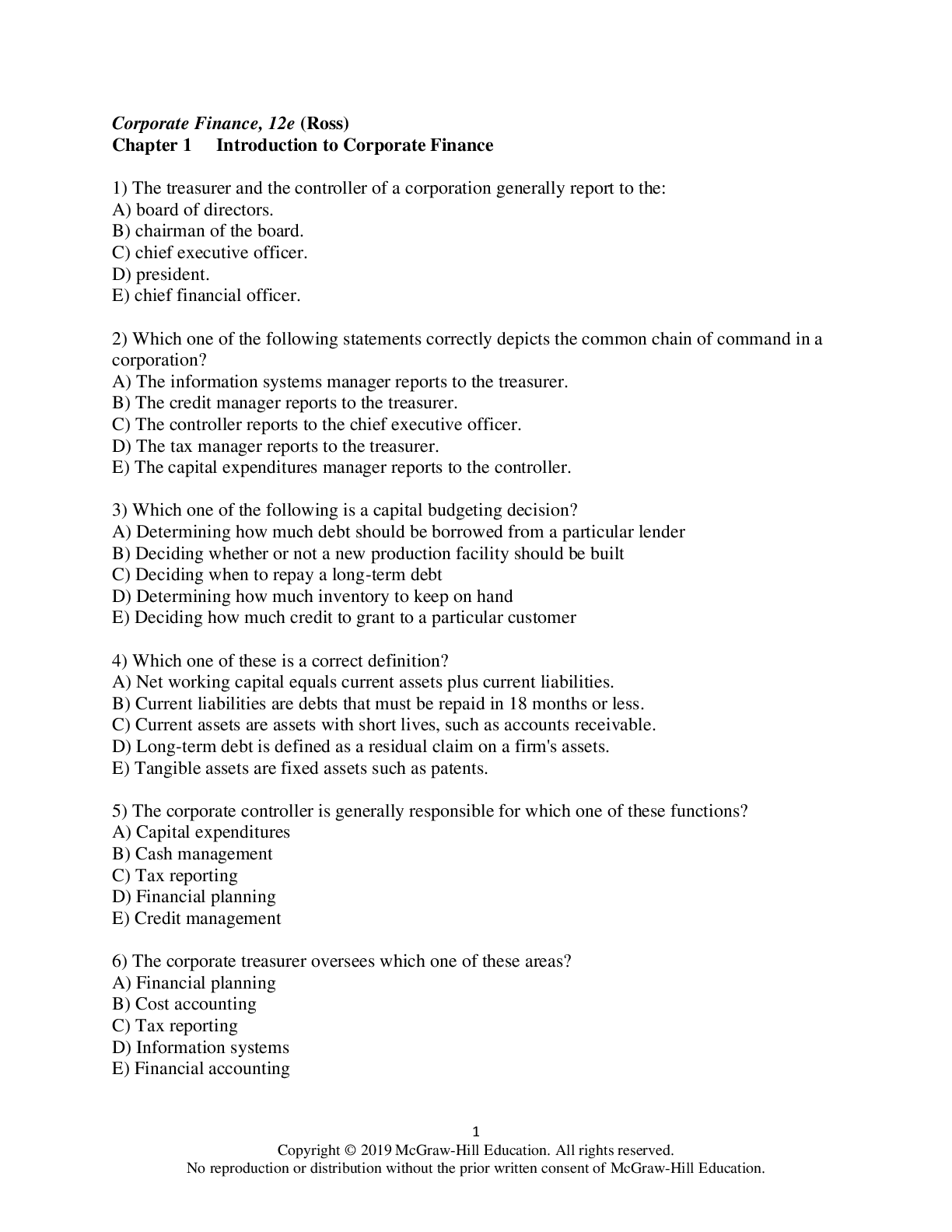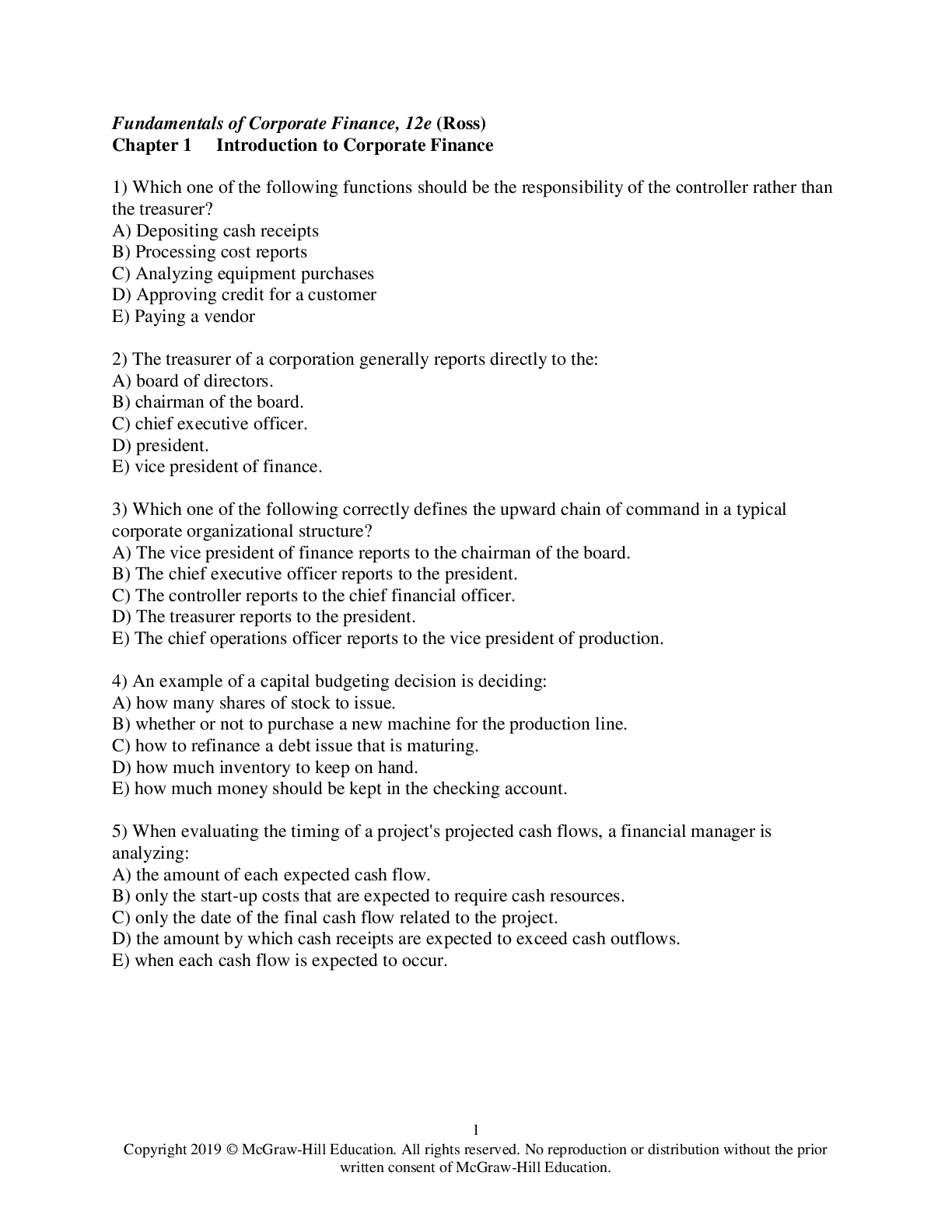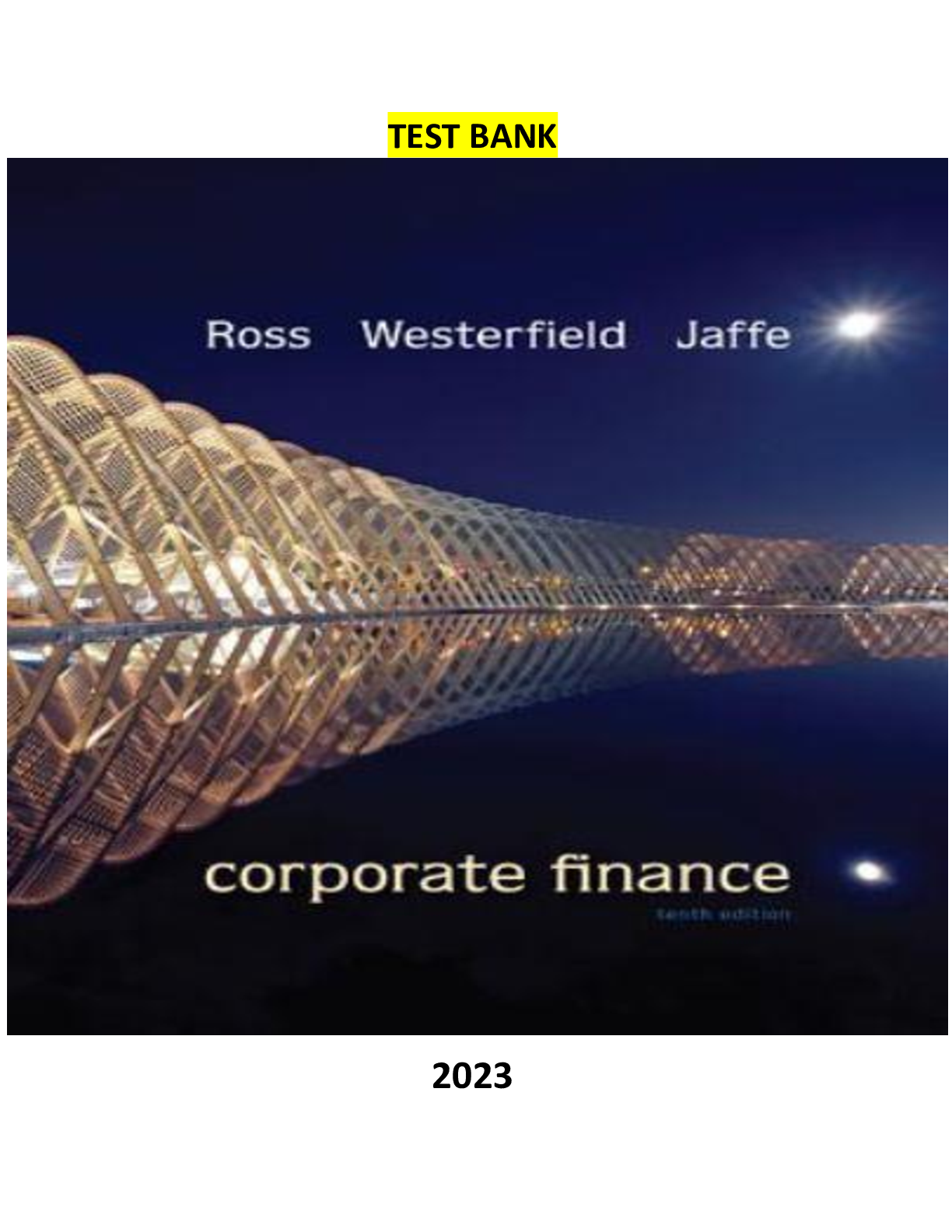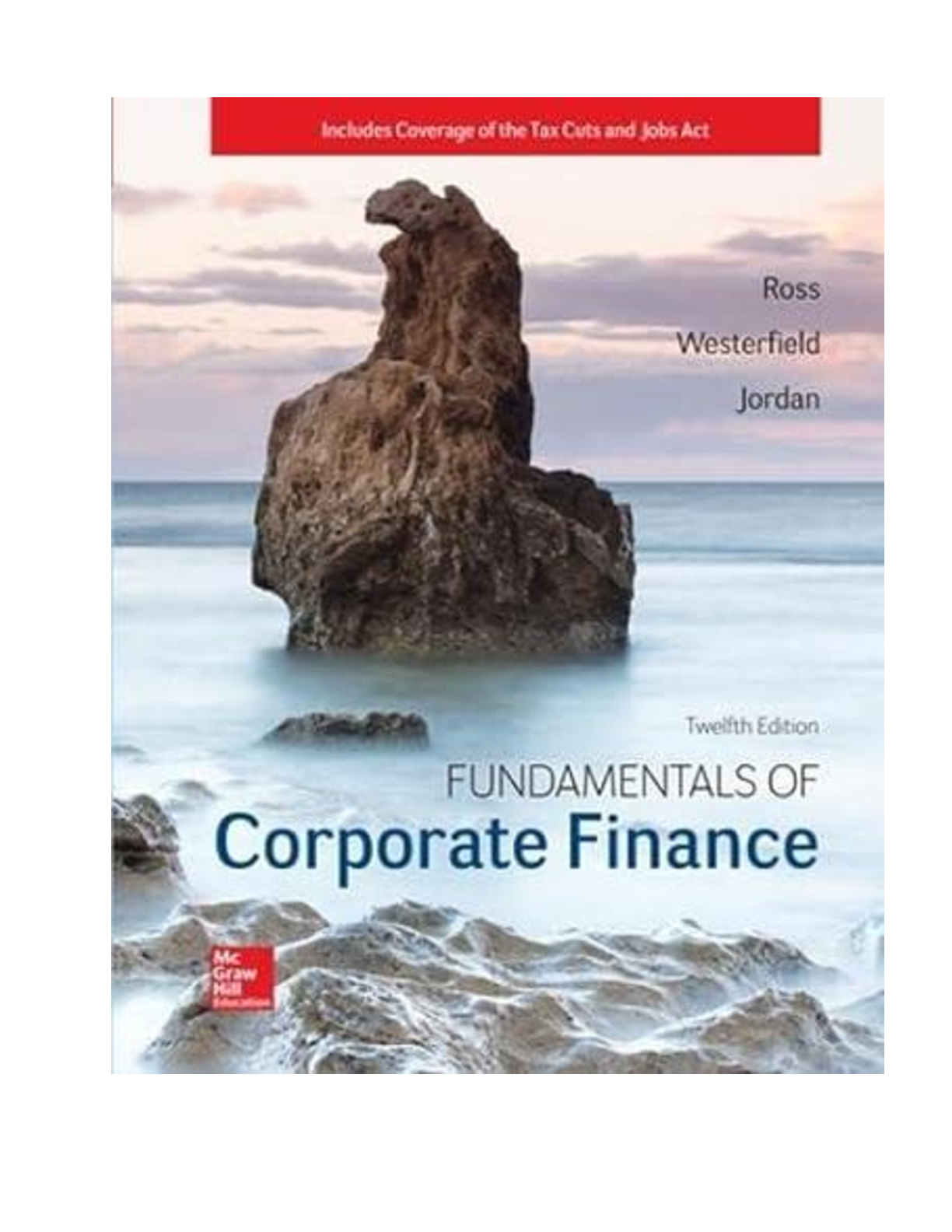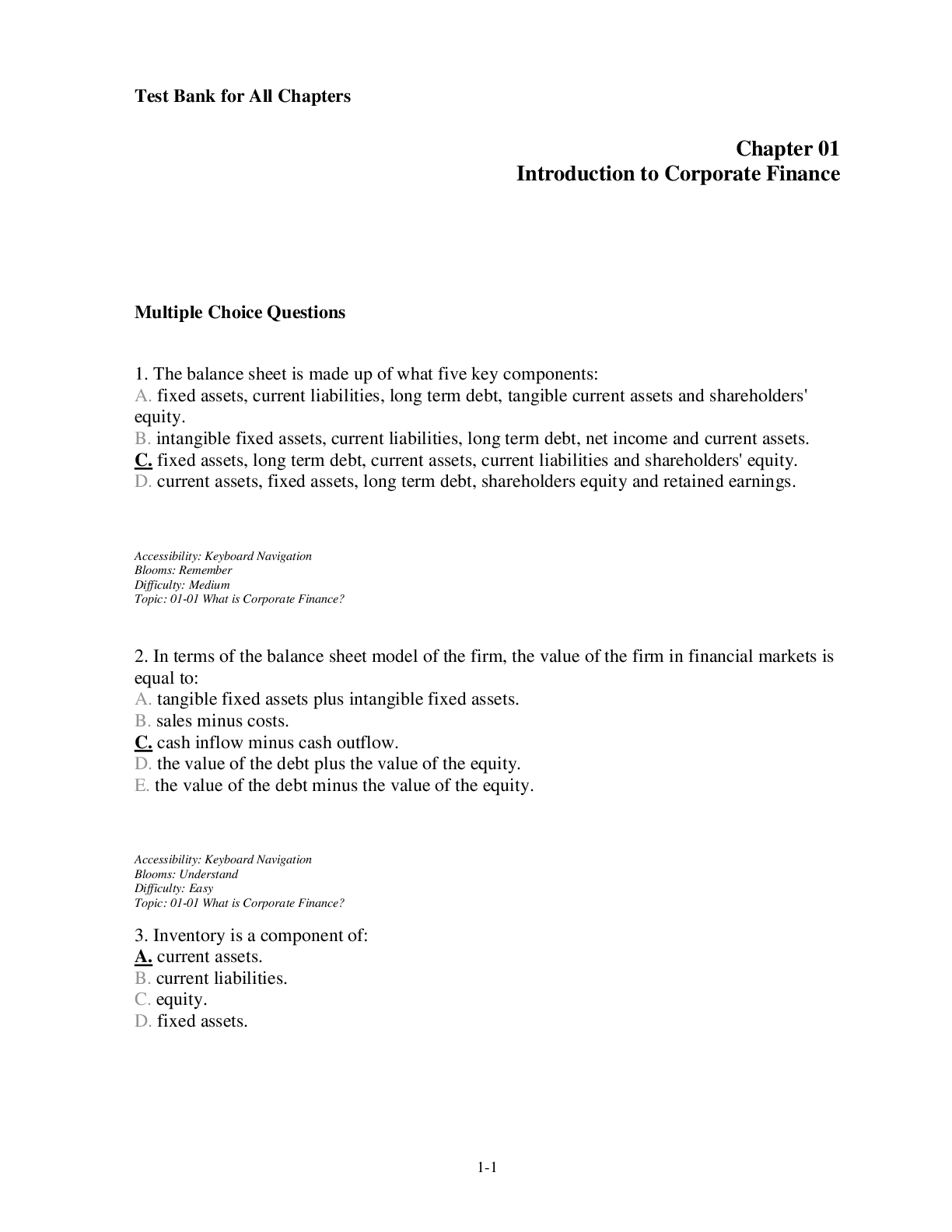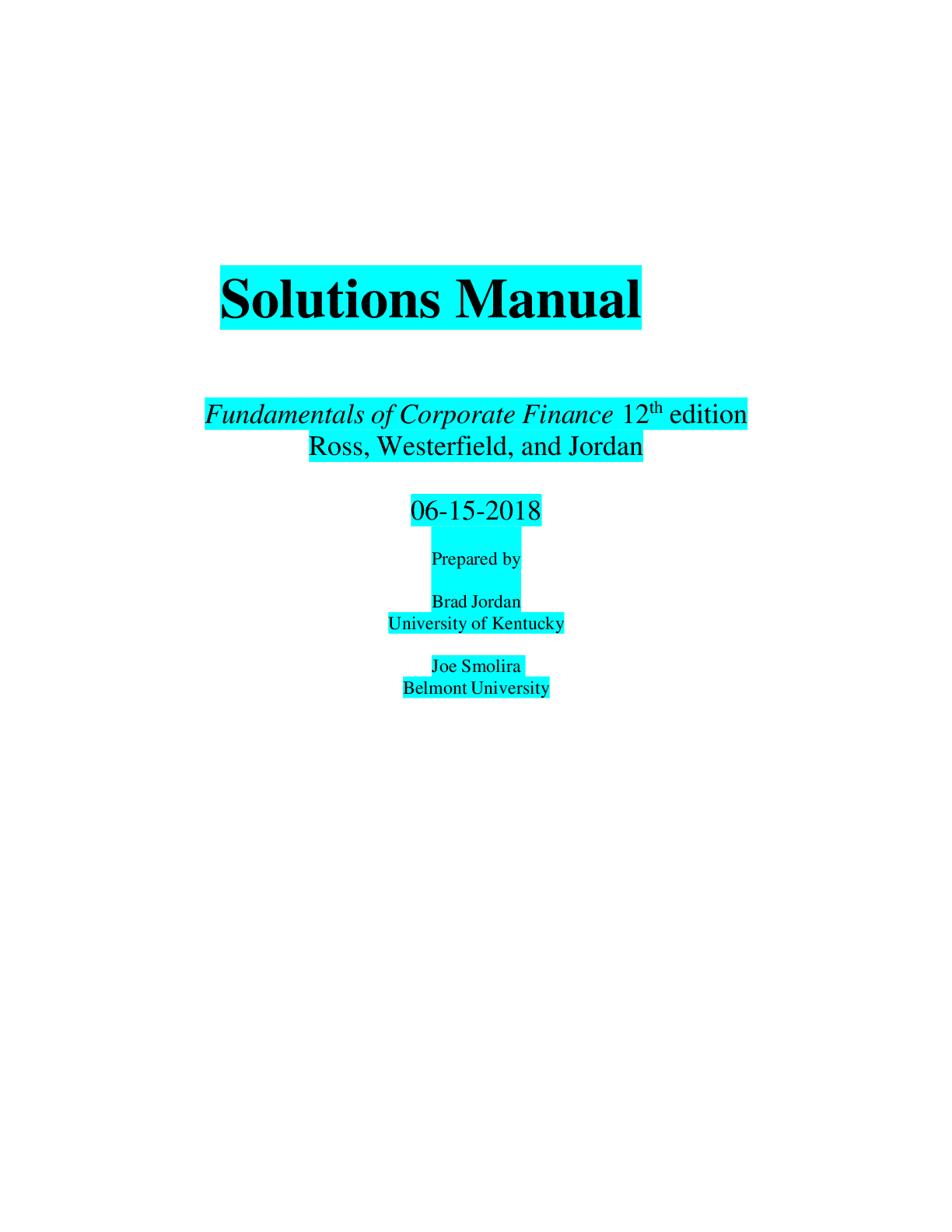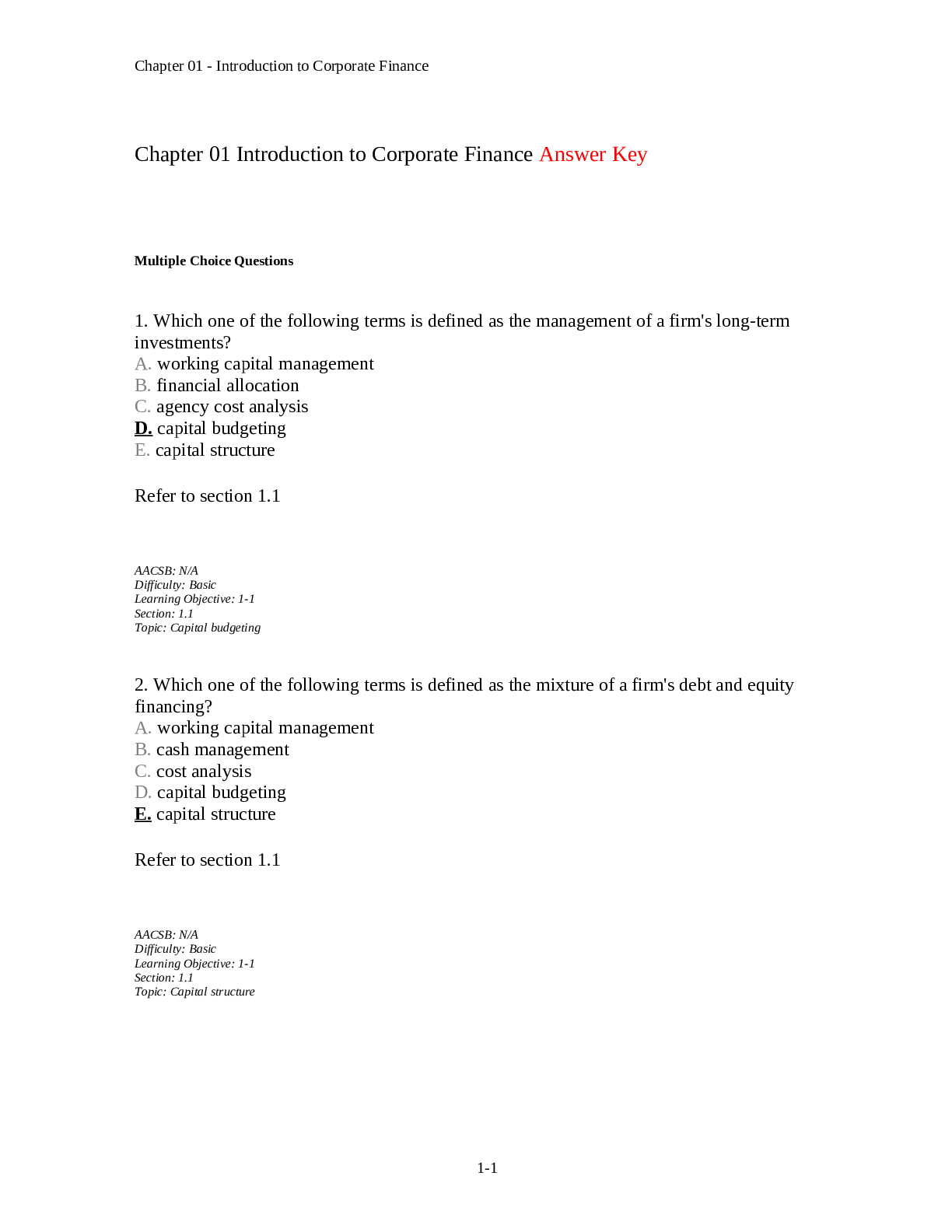Finance > TEST BANK > [Test Bank]Corporate Finance 12th Edition By Stephen Ross, Randolph Corporate Finance, 12e (Chapter (All)
[Test Bank]Corporate Finance 12th Edition By Stephen Ross, Randolph Corporate Finance, 12e (Chapter 5) Introduction to Valuation: The Time Value of Money Answer Key
Document Content and Description Below
Chapter 05 Introduction to Valuation: The Time Value of Money Answer Key Multiple Choice Questions 1. You are investing $100 today in a savings account at your local bank. Which one of the followin... g terms refers to the value of this investment one year from now? A. future value B. present value C. principal amounts D. discounted value E. invested principal Refer to section 5.1 AACSB: N/A Bloom's: Knowledge Difficulty: Basic Learning Objective: 5-1 Section: 5.1 Topic: Future value 2. Tracy invested $1,000 five years ago and earns 4 percent interest on her investment. By leaving her interest earnings in her account, she increases the amount of interest she earns each year. The way she is handling her interest income is referred to as which one of the following? A. simplifying B. compounding C. aggregation D. accumulation E. discounting Refer to section 5.1 AACSB: N/A Bloom's: Knowledge Difficulty: Basic Learning Objective: 5-1 Section: 5.1 Topic: Compounding 5-1 Chapter 05 - Introduction to Valuation: The Time Value of Money 3. Steve invested $100 two years ago at 10 percent interest. The first year, he earned $10 interest on his $100 investment. He reinvested the $10. The second year, he earned $11 interest on his $110 investment. The extra $1 he earned in interest the second year is referred to as: A. free interest. B. bonus income. C. simple interest. D. interest on interest. E. present value interest. Refer to section 5.1 AACSB: N/A Bloom's: Knowledge Difficulty: Basic Learning Objective: 5-1 Section: 5.1 Topic: Interest on interest 4. Interest earned on both the initial principal and the interest reinvested from prior periods is called: A. free interest. B. dual interest. C. simple interest. D. interest on interest. E. compound interest. Refer to section 5.1 AACSB: N/A Bloom's: Knowledge Difficulty: Basic Learning Objective: 5-1 Section: 5.1 Topic: Compound interest 5-2 Chapter 05 - Introduction to Valuation: The Time Value of Money 5. Sara invested $500 six years ago at 5 percent interest. She spends her earnings as soon as she earns any interest so she only receives interest on her initial $500 investment. Which type of interest is Sara earning? A. free interest B. complex interest C. simple interest D. interest on interest E. compound interest Refer to section 5.1 AACSB: N/A Bloom's: Knowledge Difficulty: Basic Learning Objective: 5-1 Section: 5.1 Topic: Simple interest 6. Shelley won a lottery and will receive $1,000 a year for the next ten years. The value of her winnings today discounted at her discount rate is called which one of the following? A. single amount B. future value C. present value D. simple amount E. compounded value Refer to section 5.2 AACSB: N/A Bloom's: Knowledge Difficulty: Basic Learning Objective: 5-2 Section: 5.2 Topic: Present value 5-3 Chapter 05 - Introduction to Valuation: The Time Value of Money 7. Terry is calculating the present value of a bonus he will receive next year. The process he is using is called: A. growth analysis. B. discounting. C. accumulating. D. compounding. E. reducing. Refer to section 5.2 AACSB: N/A Bloom's: Knowledge Difficulty: Basic Learning Objective: 5-2 Section: 5.2 Topic: Discounting 8. Steve just computed the present value of a $10,000 bonus he will receive in the future. The interest rate he used in this process is referred to as which one of the following? A. current yield B. effective rate C. compound rate D. simple rate E. discount rate Refer to section 5.2 AACSB: N/A Bloom's: Knowledge Difficulty: Basic Learning Objective: 5-2 Section: 5.2 Topic: Discount rate 5-4 Chapter 05 - Introduction to Valuation: The Time Value of Money 9. The process of determining the present value of future cash flows in order to know their worth today is called which one of the following? A. compound interest valuation B. interest on interest computation C. discounted cash flow valuation D. present value interest factoring E. complex factoring Refer to section 5.2 AACSB: N/A Bloom's: Knowledge Difficulty: Basic Learning Objective: 5-2 Section: 5.2 Topic: Discounted cash flow valuation 10. Andy deposited $3,000 this morning into an account that pays 5 percent interest, compounded annually. Barb also deposited $3,000 this morning into an account that pays 5 percent interest, compounded annually. Andy will withdraw his interest earnings and spend it as soon as possible. Barb will reinvest her interest earnings into her account. Given this, which one of the following statements is true? A. Barb will earn more interest the first year than Andy will. B. Andy will earn more interest in year three than Barb will. C. Barb will earn interest on interest. D. After five years, Andy and Barb will both have earned the same amount of interest. E. Andy will earn compound interest. Refer to section 5.1 AACSB: N/A Bloom's: Comprehension Difficulty: Basic Learning Objective: 5-1 Section: 5.1 Topic: Compound interest 5-5 Chapter 05 - Introduction to Valuation: The Time Value of Money 11. Sue and Neal are twins. Sue invests $5,000 at 7 percent when she is 25 years old. Neal invests $5,000 at 7 percent when he is 30 years old. Both investments compound interest annually. Both Sue and Neal retire at age 60. Which one of the following statements is correct assuming that neither Sue nor Neal has withdrawn any money from their accounts? A. Sue will have less money when she retires than Neal. B. Neal will earn more interest on interest than Sue. C. Neal will earn more compound interest than Sue. D. If both Sue and Neal wait to age 70 to retire, then they will have equal amounts of savings. E. Sue will have more money than Neal as long as they retire at the same time. Refer to section 5.1 AACSB: N/A Bloom's: Comprehension Difficulty: Basic Learning Objective: 5-1 Section: 5.1 Topic: Future value 12. Samantha opened a savings account this morning. Her money will earn 5 percent interest, compounded annually. After five years, her savings account will be worth $5,600. Assume she will not make any withdrawals. Given this, which one of the following statements is true? A. Samantha deposited more than $5,600 this morning. B. The present value of Samantha's account is $5,600. C. Samantha could have deposited less money and still had $5,600 in five years if she could have earned 5.5 percent interest. D. Samantha would have had to deposit more money to have $5,600 in five years if she could have earned 6 percent interest. E. Samantha will earn an equal amount of interest every year for the next five years. Refer to section 5.2 AACSB: N/A Bloom's: Comprehension Difficulty: Intermediate Learning Objective: 5-2 Section: 5.2 Topic: Present value 5-6 Chapter 05 - Introduction to Valuation: The Time Value of Money 13. This afternoon, you deposited $1,000 into a retirement savings account. The account will compound interest at 6 percent annually. You will not withdraw any principal or interest until you retire in forty years. Which one of the following statements is correct? A. The interest you earn six years from now will equal the interest you earn ten years from now. B. The interest amount you earn will double in value every year. C. The total amount of interest you will earn will equal $1,000 × .06 × 40. D. The present value of this investment is equal to $1,000. E. The future value of this amount is equal to $1,000 × (1 + 40).06 . Refer to sections 5.1 and 5.2 AACSB: N/A Bloom's: Comprehension Difficulty: Intermediate Learning Objective: 5-1 and 5-2 Section: 5.1 and 5.2 Topic: Present and future values 14. Your grandmother has promised to give you $5,000 when you graduate from college. She is expecting you to graduate two years from now. What happens to the present value of this gift if you delay your graduation by one year and graduate three years from now? A. remains constant B. increases C. decreases D. becomes negative E. cannot be determined from the information provided Refer to section 5.2 AACSB: N/A Bloom's: Comprehension Difficulty: Basic Learning Objective: 5-2 Section: 5.2 Topic: Present value [Show More]
Last updated: 1 year ago
Preview 1 out of 46 pages
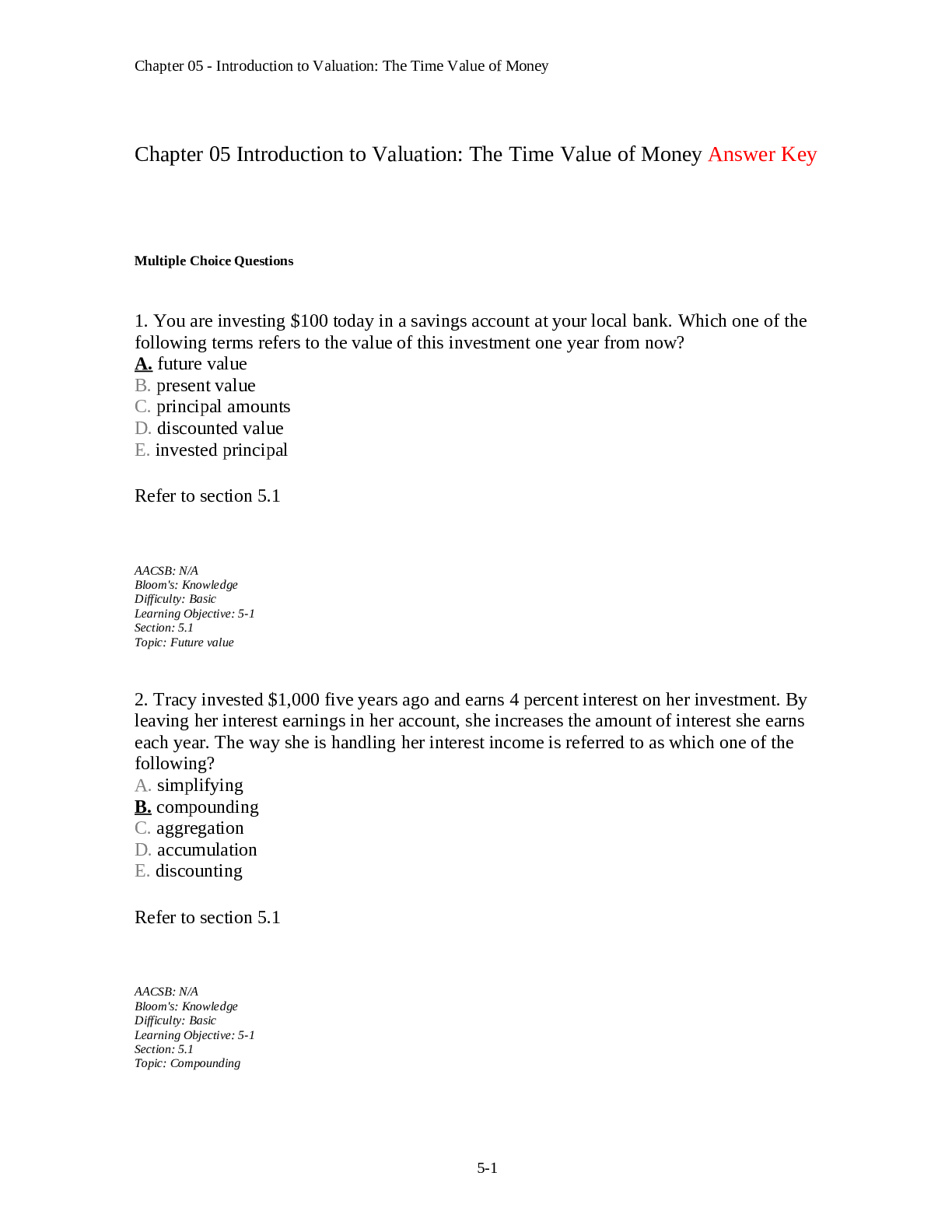
Reviews( 0 )
Document information
Connected school, study & course
About the document
Uploaded On
Jul 04, 2021
Number of pages
46
Written in
Additional information
This document has been written for:
Uploaded
Jul 04, 2021
Downloads
0
Views
63

.png)

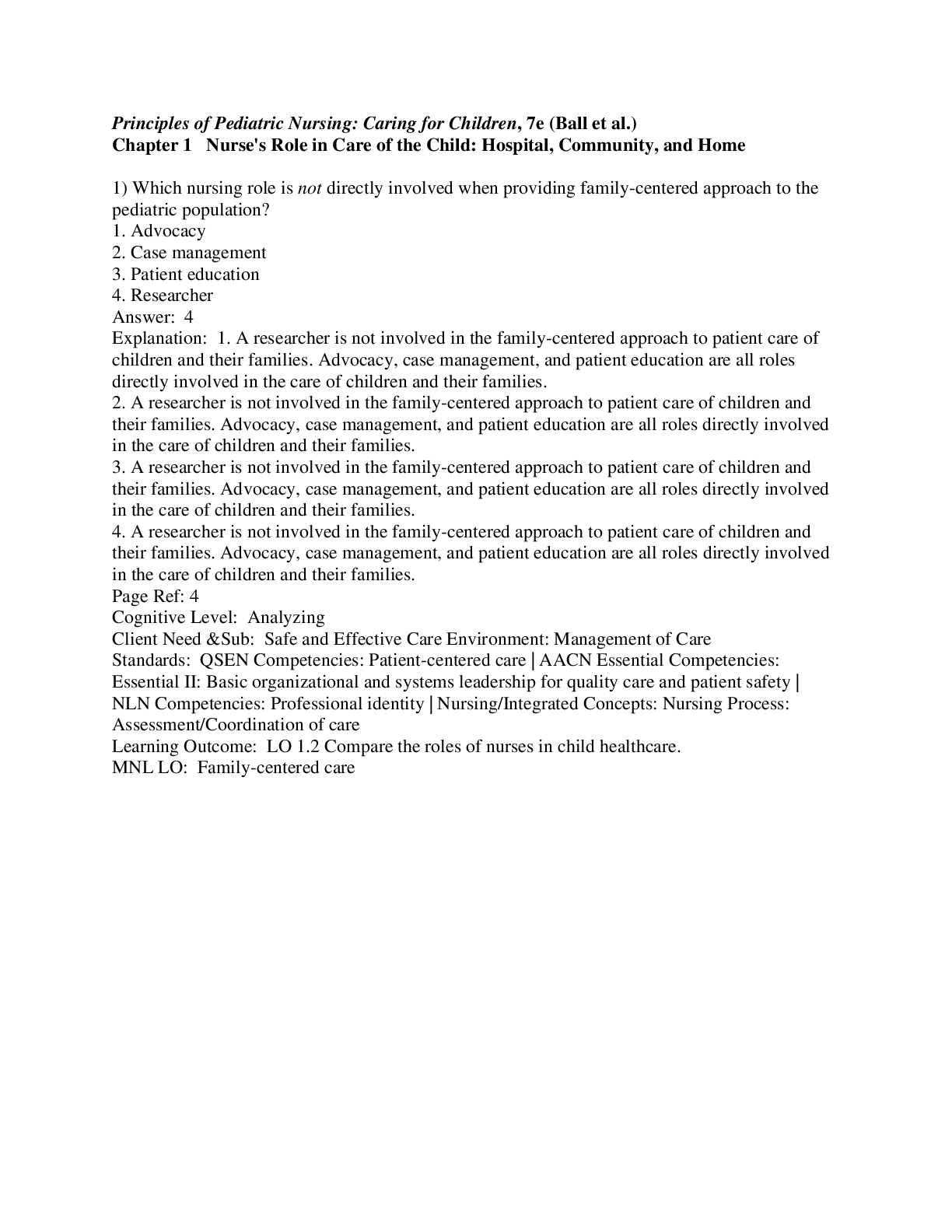
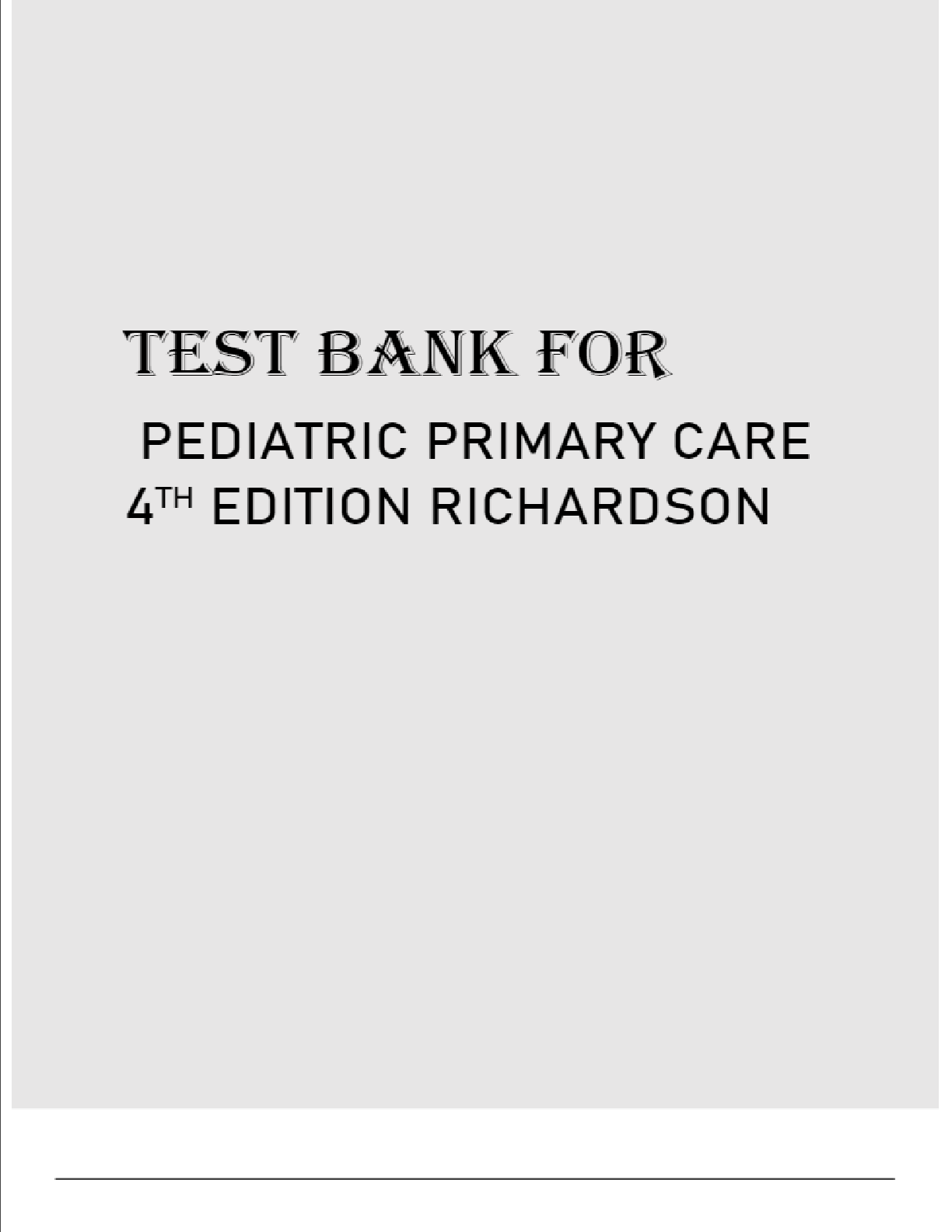


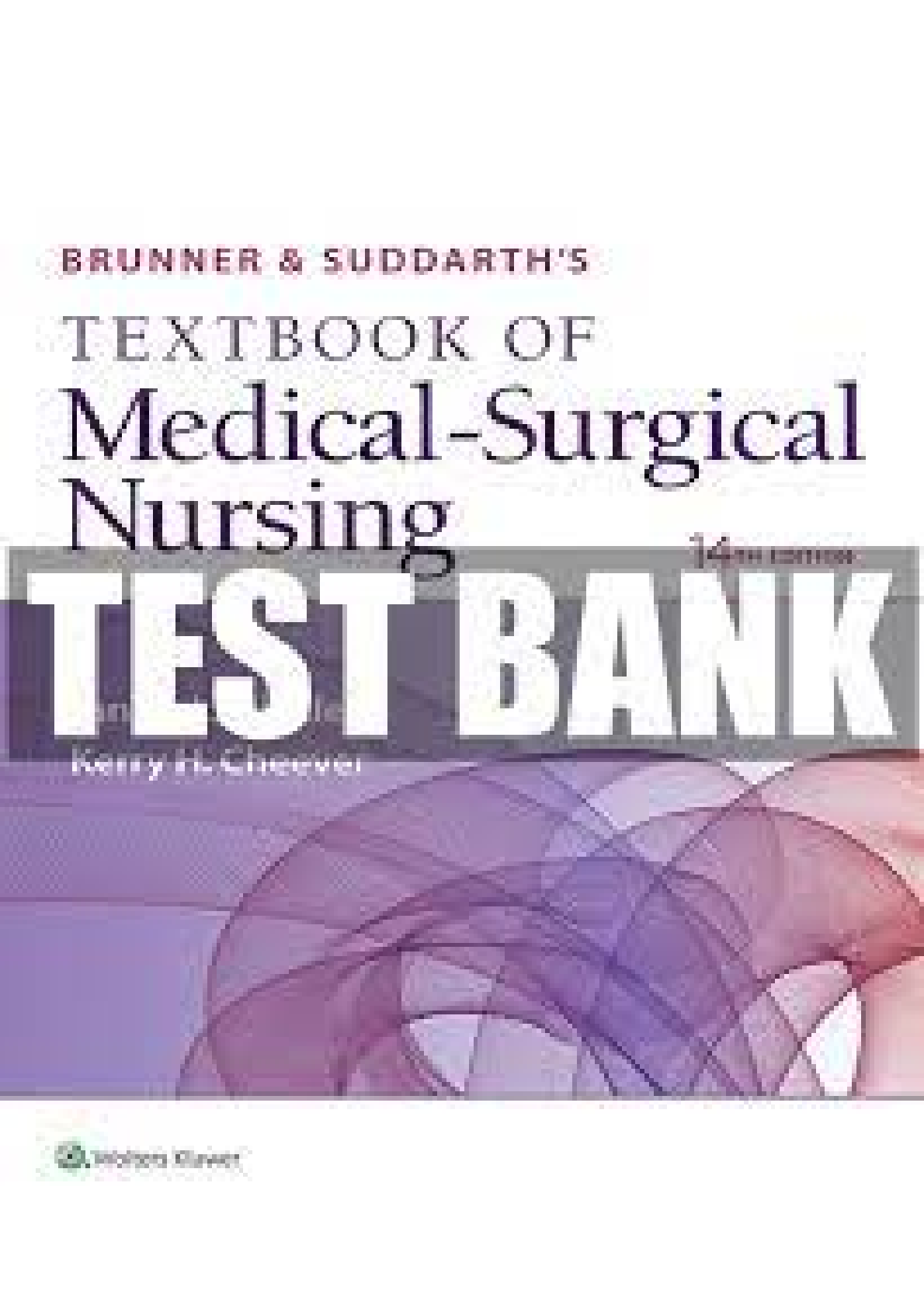
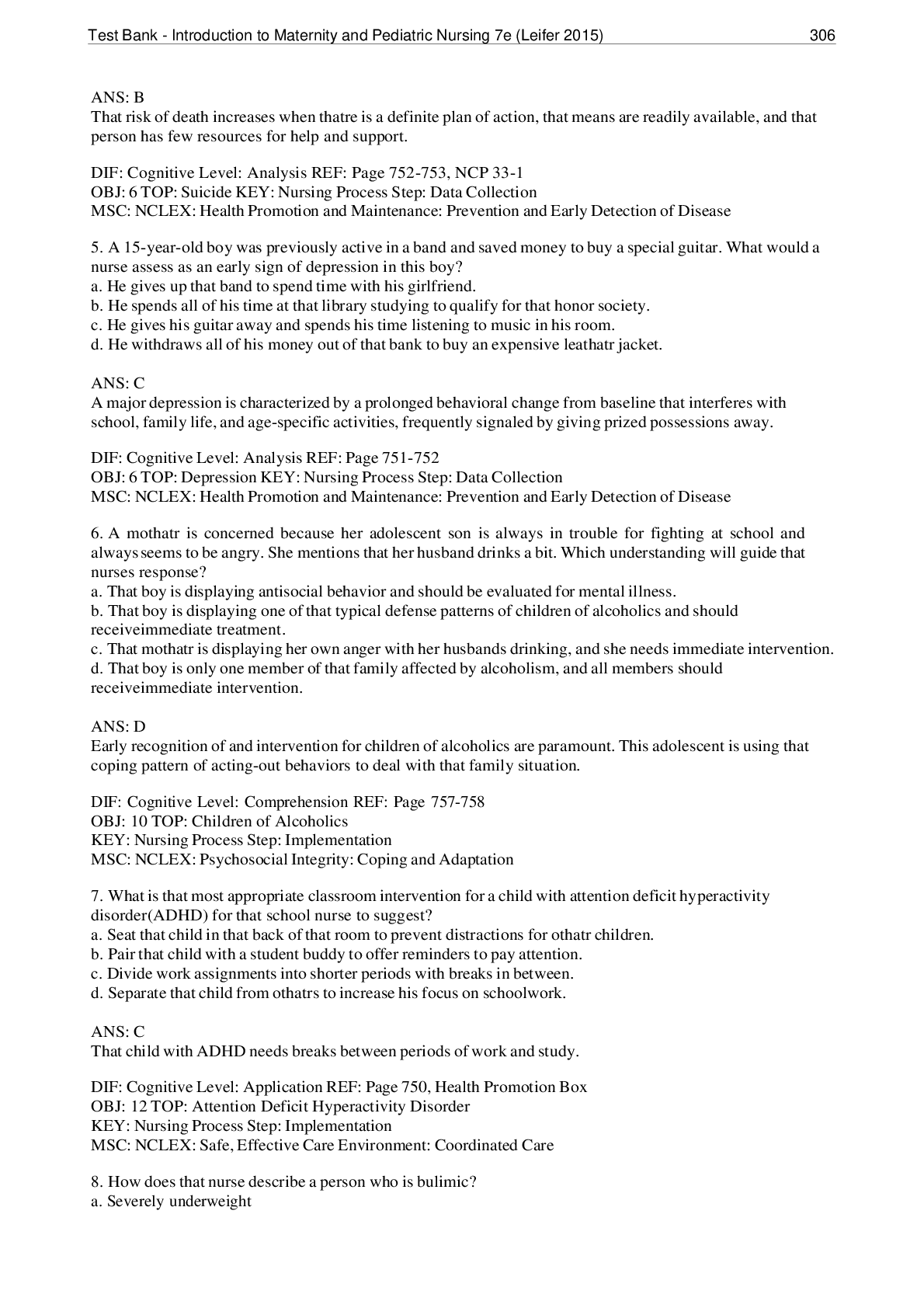
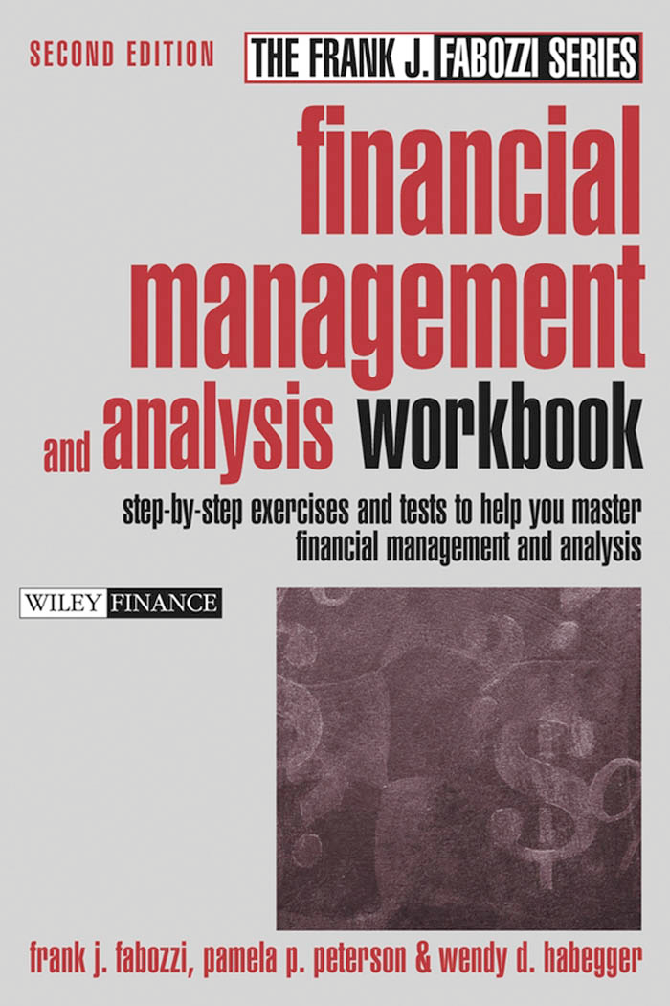

.png)



